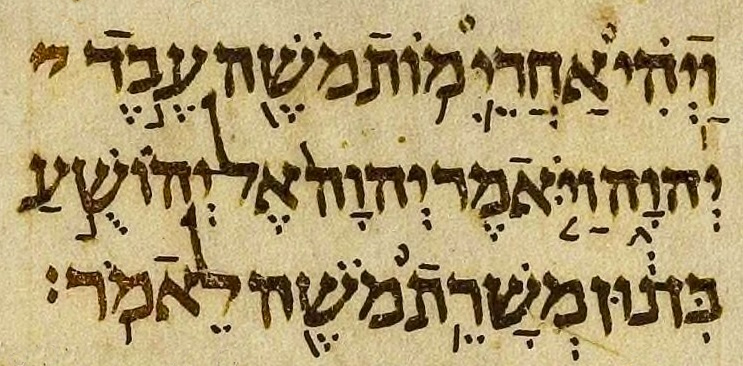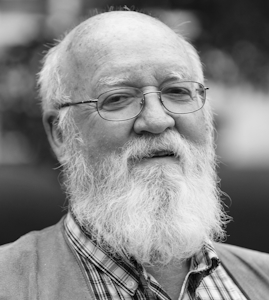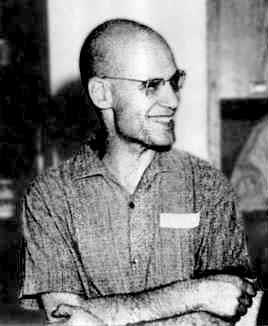REF-ANTHROPOMORPHISM
ANTHROPOMORPHISM AND PERSONIFICATION
"anthropomorphism"
The natural tendency of people to attribute traits, emotions and intentions to objects and other inanimate things.
"personification"
The natural tendency of people to attribute traits, emotions and intentions to abstract concepts, ideas, processes and other inanimate phenomena.
REF-BERESHIT
B🌱reshit

The first word of [The Bible],
both the [Jewish Torah]
and the [Christian New Testament],
typically translated as ["In the beginning..."],
referring to Genesis 1:1.
REF-COUNTERFEIT-PEOPLE
COUNTERFEIT PEOPLE

Counterfeit people are the most dangerous artifacts in human history, capable of destroying not just economies but human freedom itself.
Creating counterfeit digital people risks destroying our civilization. Democracy depends on the informed (not misinformed) consent of the governed.
By allowing the most economically and politically powerful people, corporations, and governments to control our attention, these systems will control us.
🔹Angela Collier: AI does not exist but it will ruin everything anyway
🔹Technische Universität Berlin: Bettina Berendt - Counterfeit people
🔹Wikipedia: The Puppet Master: Hunting the Ultimate Conman
🔹Wikipedia: Aggressive mimicry
REF-DRAWING-THE-LINE
DRAWING THE LINE
(idiomatic) To set a boundary, rule, or limit, especially on what one will tolerate.
Bright Line
A clearly defined set of objective rules leaving no room for unambiguity or subjective interpretations.
Fine Line
A clearly defined set of objective rules interpreted through a balancing lens of weight factors.
Allows a more flexible application than a bright line but needs additional guidelines for factor weight selection.
[bright line] [weight factors] [fine line]
Misguided selection of weights risks line blurring,
reduces objectivity and promotes inconsistent application.
Blurred Line
A degenerate set of rules open to subjective interpretations.
DUNE-PERSUADE-AND-NOT-COMPEL
DUNE - PERSUADE AND NOT COMPEL
"She said a ruler must learn to persuade and not to compel.
She said he must lay the best coffee hearth to attract the finest men."
🔹Herbert, Frank (1965). " Dune" p. 52
REF-GROTHENDIECK-PRIME
GROTHENDIECK PRIME

You might have heard of Alexander Grothendieck,
perhaps the greatest mathematician of XX century who worked on uses of spaces that play fundamental role in methods applied in Machine Learning and AI.
Lapsus Linguae / Slip Of The Tongue
He also once said that number is prime (it is not: ),
so now we honour him by calling it a "Grothendieck Prime" even though it probably never happened, but still, it is a good story.
🔹Wikipedia: Alexander Grothendieck
🔹Wikipedia: space
🔹American Mathematical Society: As If Summoned from the Void: The Life of Alexandre Grothendieck
REF-INTENTIONAL-STANCE
INTENTIONAL STANCE
Your brain naturally seeks [to separate] [tools and objects] [from] [the living beings].
We tend to see inanimate objects in terms of their utility.
We tend to see animate beings in terms of their intentional stance.
We do it all the time!

"Here is how it works: first you decide to treat the object whose behavior is to be predicted as a rational agent; then you figure out what beliefs that agent ought to have, given its place in the world and its purpose. Then you figure out what desires it ought to have, on the same considerations, and finally you predict that this rational agent will act to further its goals in the light of its beliefs. A little practical reasoning from the chosen set of beliefs and desires will in most instances yield a decision about what the agent ought to do; that is what you predict the agent will do."
— Daniel Dennett, The Intentional Stance, p. 17
We are wired for real-time use of physical stance. We are quick to evaluate utility of objects and tools. We spot their strengths and weaknesses with high precision and efficiency, and we use that knowledge to improve our tools. This natural process of continuous evaluation and improvement of tools consumes relatively few resources (attention, energy) to produce relatively high yield (productivity, automation).
Intentional stance is a slower, more complex process allowing us to plan interactions and predict their outcomes, cooperate and bond. It comes equipped with clemency and fault tolerance improving chances of damaged social bonds to recover with time, making us socially robust animals. This higher-level process consumes relatively more resources of more types (attention, energy, complex internal representations, regulation of emotions) to construct and maintain robust social ecosystems that improve long-term outcomes of the spiecies.
⚠ Consider the impact of tools that exploit core functions of your brain.
⚠ Think of the impact on your future leaders.
🔹Daniel C. Dennett (1996). "The Intentional Stance", Cambridge, Massachusetts: The MIT Press, ISBN 978-0-262-54053-7
🔹Dennett, D.C., (1971). "Intentional Systems", The Journal of Philosophy, Vol.68, No. 4, (25 February 1971), p. 87-106
🔹Philip Robbins; Anthony I. Jack (Jan 2006). "The phenomenal stance". Philosophical Studies
🔹Mehrdad Jazayeri, Ph.D, The MIT Department of Brain and Cognitive Sciences, Neurobiology of inference
🔹The Senate Committee on the Judiciary: Teen Mental Health Is Plummeting
REF-METAMORPHOSES
METAMORPHOSES
"IN NOVA FERT ANIMUS MUTATAS DICERE FORMAS" is the text of
the first line of the first book of Ovid's "Metamorphoses",
a literary work he completed in AD 8.
The same year the same Ovid got banished from Rome.
The same year 12-year old Jesus was lost by his parents for three whole days.
Franz Kafka alludes to ["Metamorphoses"]
throughout ["The Metamorphosis"]
speaking of [transformations]
at the heart [translations]
of both texts.
This technique creates a type of "entanglement of meaning", a text that might be interpreted differently by different readers, depending on the reading order, time between reads, other books read in between etc.
Knowing both texts allows the reader to consider the ways in which they relate to each other, giving additional depth and enabling new interpretations.
🔹Ovid (Year 8), "Metamorphoses" , Book I, Line I
🔹Wikipedia: Ovid
🔹Wikipedia: Franz Kafka
🔹Wikipedia: The Metamorphosis
🔹Wikipedia: Finding in the Temple
🔹Opera Aperta
REF-OPERAAPERTA
OPERA APERTA
Opera Aperta is a term understood as "a plurality of meanings". More specifically, it suggests that there is not just one final meaning of a text or other forms of expression.
Instead, the interpretation always depends on past experiences, prior knowledge, amount of attention given or current mood of the interpreter, among many other factors.
In a broader sense this applies to all forms of information, not limited to art.
🔹Board of Regents of the University of Oklahoma: The Poetics of the Open Form
🔹Wikipedia: Umberto Eco
🔹Wikipedia: Open text
REF-OZYMANDIAS
OZYMANDIAS

I met a traveller from an antique land
Who said: Two vast and trunkless legs of stone
Stand in the desert. Near them, on the sand,
Half sunk, a shattered visage lies, whose frown,
And wrinkled lip, and sneer of cold command,
Tell that its sculptor well those passions read
Which yet survive, stamped on these lifeless things,
The hand that mocked them and the heart that fed,
And on the pedestal these words appear:
"My name is Ozymandias, King of Kings,
Look on my works, ye Mighty, and despair!"Nothing beside remains.
Boundless and bare sands stretch far away.
REF-POTENTIAL-POWER
POTENTIAL POWER
"leaders have powers only potentially available to them"
Structures of leadership naturally assume high importance in all organisations.
Leaders must impose upon themselves rules of [civil and mutually respectful behavior] and acknowledge with [integrity and certitude] that their words and actions have long lasting impact on the whole organisation and its ecosystem.
Leaders have obligation to transmit only those ideas which focus attention of the whole organization on goals that bring long term benefit to its people and to its ecosystem.
A healthy leadership structure is characterised by:
- [
low aversion to change] of leaders who do not deliver their promise. - [
civil and mutually respectful] leadership changes at all levels. - leaders who seek and maintain [
healthy collaboration] with all their peers.
A healthy collaboration practice:
- is built on [
robust relationships]. - [
do not degrade] before, during, and after leadership change. - continuously [
seeks to improve].
A robust relationship is:
- built on [
dialogue and consensus]. - civil, mutually respectful and [
mutually beneficial]. - [
not impacted by relative positions] in structures of any social or natural hierarchy.
🔹Knowles, Henry P.; Saxberg, Borje O. (1971). "Personality and Leadership Behavior"